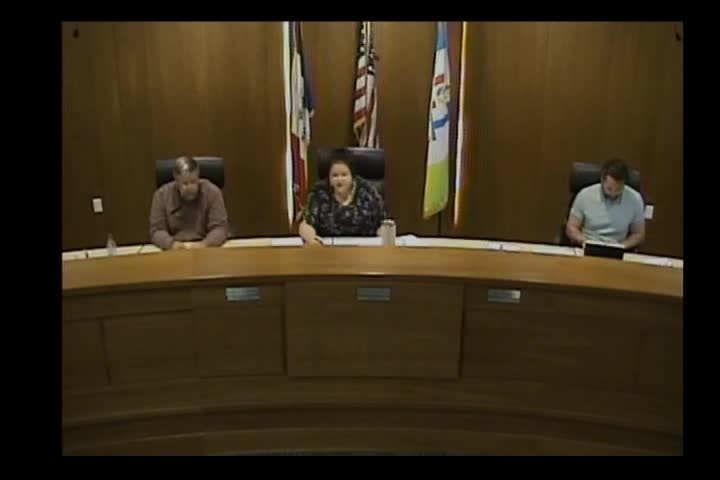Linn County debates new wind energy ordinance amid public concerns
June 10, 2024 | Linn County, Iowa

This article was created by AI summarizing key points discussed. AI makes mistakes, so for full details and context, please refer to the video of the full meeting. Please report any errors so we can fix them. Report an error »

In a recent Linn County government meeting, discussions centered on proposed amendments to renewable energy ordinances, particularly focusing on solar and wind energy projects. Public comments highlighted concerns regarding noise levels and setbacks for wind energy systems, with some advocating for stricter regulations while others argued that current proposals could hinder development.
Junior Lunsman, a member of the public, emphasized the importance of maintaining consistent decibel levels for solar projects, which are currently set at 55 during the day and 50 at night. He questioned whether similar standards would be applied to wind projects, suggesting the need for a scorecard to evaluate their impact.
Les Beck, an Iowa policy analyst, praised the proposed solar ordinance for its forward-thinking provisions, including a view shed analysis and considerations for battery energy storage. However, he echoed concerns about noise levels and setbacks, noting that industry standards typically set decibel limits at 50 to 55, measured from occupied structures rather than property lines.
The meeting also addressed contracts related to juvenile court services, with changes in funding sources for programs aimed at juvenile detention and diversion. Will Wright, the Director of Juvenile Detention and Diversion Services, explained that funding would now come directly from Juvenile Court Services rather than previous grants.
Additionally, the Linn County Historic Preservation Commission presented its fiscal year 2025 grant funding recommendations, noting a significant increase in interest for preservation projects. The commission was able to allocate $28,800 from over $100,000 in requests, supporting various historical initiatives across the county.
As the meeting progressed, the board opened a public hearing on amendments to the Unified Development Code concerning wind energy conversion systems. Planning and Development Director Charlie Nichols clarified that the ordinance updates were not in response to any specific wind project but were intended to prepare the county for future developments. He noted that public feedback had raised concerns about the ordinance's alignment with the county's comprehensive plan, particularly regarding the balance between promoting renewable energy and preserving rural character.
The proposed amendments include a recommended noise level of 45 decibels, which has sparked debate among stakeholders. The board plans to continue reviewing public input as they refine the ordinance, aiming to strike a balance between environmental considerations and community interests.
Junior Lunsman, a member of the public, emphasized the importance of maintaining consistent decibel levels for solar projects, which are currently set at 55 during the day and 50 at night. He questioned whether similar standards would be applied to wind projects, suggesting the need for a scorecard to evaluate their impact.
Les Beck, an Iowa policy analyst, praised the proposed solar ordinance for its forward-thinking provisions, including a view shed analysis and considerations for battery energy storage. However, he echoed concerns about noise levels and setbacks, noting that industry standards typically set decibel limits at 50 to 55, measured from occupied structures rather than property lines.
The meeting also addressed contracts related to juvenile court services, with changes in funding sources for programs aimed at juvenile detention and diversion. Will Wright, the Director of Juvenile Detention and Diversion Services, explained that funding would now come directly from Juvenile Court Services rather than previous grants.
Additionally, the Linn County Historic Preservation Commission presented its fiscal year 2025 grant funding recommendations, noting a significant increase in interest for preservation projects. The commission was able to allocate $28,800 from over $100,000 in requests, supporting various historical initiatives across the county.
As the meeting progressed, the board opened a public hearing on amendments to the Unified Development Code concerning wind energy conversion systems. Planning and Development Director Charlie Nichols clarified that the ordinance updates were not in response to any specific wind project but were intended to prepare the county for future developments. He noted that public feedback had raised concerns about the ordinance's alignment with the county's comprehensive plan, particularly regarding the balance between promoting renewable energy and preserving rural character.
The proposed amendments include a recommended noise level of 45 decibels, which has sparked debate among stakeholders. The board plans to continue reviewing public input as they refine the ordinance, aiming to strike a balance between environmental considerations and community interests.
View full meeting
This article is based on a recent meeting—watch the full video and explore the complete transcript for deeper insights into the discussion.
View full meeting
